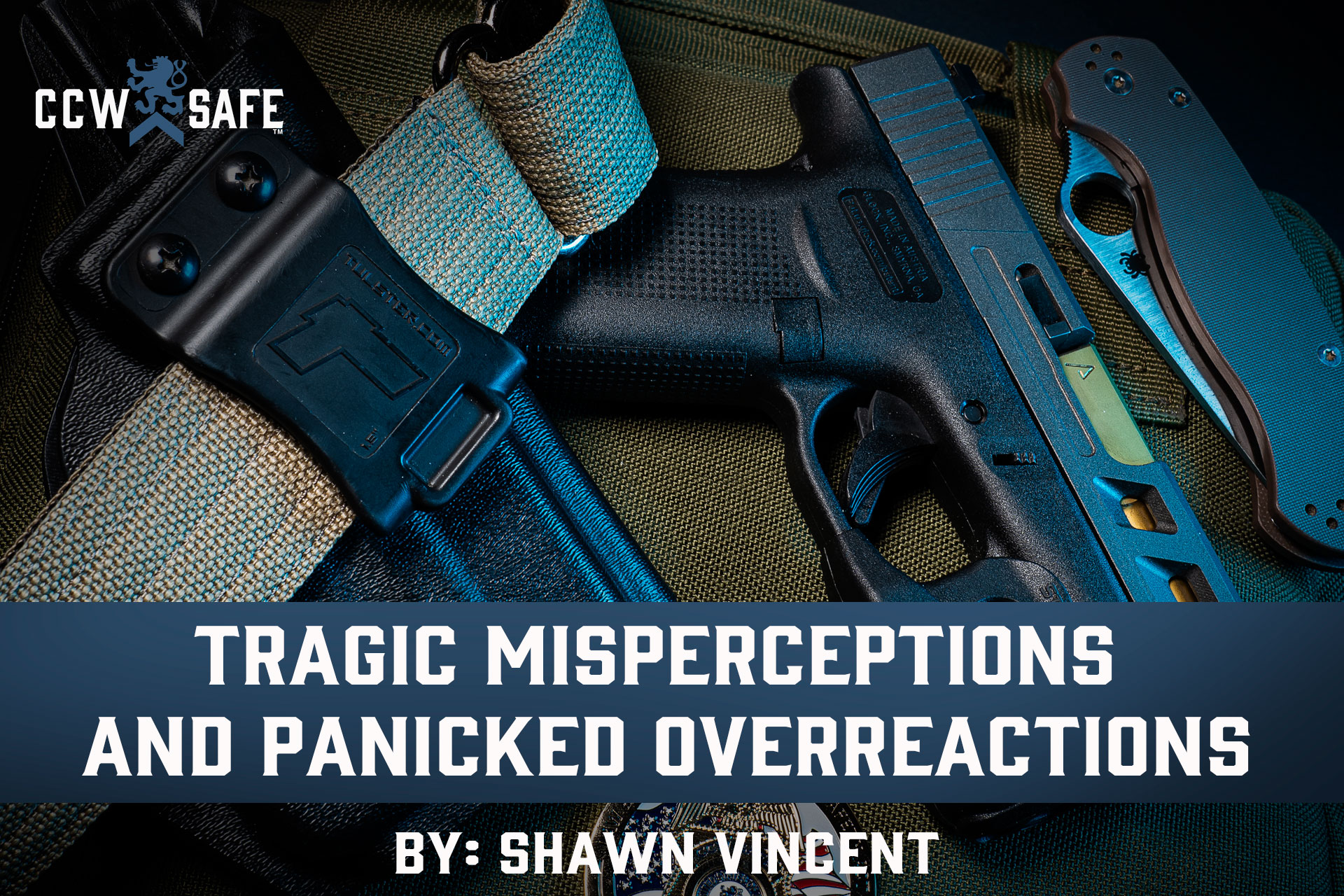
Posted on October 18, 2019
Tragic Misperceptions and Panicked Overreactions
Tragic Misperceptions and Panicked Overreactions
Using avoidance and de-escalation to prevent unnecessary shootings
Off-duty Dallas police officer Amber Guyger entered her apartment after a long shift and encountered a man burglarizing her home. She shot and killed the intruder, which would normally be justified, but there were a couple of problems. Firstly, the man wasn’t burglarizing anything; he was eating ice cream and watching football. Secondly, it wasn’t her apartment; it was HIS apartment. She had accidentally parked on the wrong floor and failed to notice her mistake until after she had slain her upstairs neighbor. Amber Guyger misperceived the situation, and she overreacted. Thanks to her demonstrative regret during trial (and to the victim’s sympathetic and forgiving brother) Guyger will only serve 10 years for murder.
Many of the shootings we have explored in this series of articles involved tragic misperceptions and panicked overreactions that upended the defender’s self-defense claim.
Michael Dunn shot Jordan Davis after an argument over loud music in a convenience store parking lot. Dunn claimed Davis displayed a shotgun — or at least something that looked like the barrel of a shotgun. In response, Dunn pulled his pistol and fired, killing Davis. During the investigation, police never discovered a shotgun or anything that could be mistaken for a shotgun. Dunn, if you believe his testimony, misperceived the threat, and a jury found his actions unjustified.
Jerome Ersland, an Oklahoma City pharmacist, became the victim of an armed robbery when two masked men stormed his place of business. One of the robbers unquestionably had a gun. Ersland, a concealed carrier, fired at the intruders, striking one with an incapacitating yet non-lethal head wound. He chased the other robber out of the store, and when he returned, Ersland retrieved a second firearm and fired several shots to the prone body of the intruder he had already incapacited. Ersland overreacted to the threat, and those final shots earned him a life sentence for first-degree murder.
Ted Wafer awoke at 4am to the sounds of an intruder battering the front door of his Dearborn, Michigan home. During a lull in the pounding, Wafer, armed with a shotgun, opened the front door to investigate. He found a shadowy figure on his porch who tried to push through the screen door. Wafer fired a single round, fatally striking the interloper in the head. Wafer learned later that the would-be intruder was a recently graduated highschool cheerleader who happened to be drunk, high, injured and probably desperately looking for help. She was certainly unarmed. Wafer both misperceived the threat and overreacted. He’s in prison for second-degree murder.
I frequently stress the importance of avoidance and de-escalation during potential self-defense scenarios — even in situations where use of force appears absolutely justified, such as in an armed robbery or home invasion. The reason I stress caution is because we’ve encountered so many cases where the shooter was mistaken about the circumstance and got carried away with raw emotion and fear in the heat of the moment.
Had Michael Dunn disengaged from the shouting match and moved to a different parking spot (or better yet, never engaged in the first place), the whole deadly encounter could have been avoided. Had Jerome Ersland ended his engagement after the first shots incapacitated one robber and the other fled, he’d be a hero rather than a convict. And had Ted Wafer called for help and waited in his home rather than engaging the stranger on his porch, the cheerleader would be alive, and he would be a free man.
As for Amber Guyger, if she had retreated from the apartment when she discovered a stranger in what she thought was her living room, she would have avoided a tragic mistake that has destroyed multiple lives. Maybe it defies credulity to think that you could mistake someone else’s home for your own, but in Guyger’s case, I believe her. It’s less difficult, however, to imagine mistaking a disoriented intoxicated person for an invader. In darkness, it can be easy to mistake an unarmed stranger holding an unidentified object for an assailant wielding a gun.
As a concealed carrier, if your best practice is avoidance and de-escalation whenever it is safe to do so — even in circumstances where you feel certain you are justified in using deadly force — then you might be able to avoid a situation where tragic misperception or panicked overreaction leads to an unnecessary self-defense homicide. In any tense encounter, there is a possibility that you could be wrong about one or more key details. If you have the time to safely reassess the situation or avoid a confrontation, even if it means letting the bad guy get away, then you might just avoid a deadly mistake that could cost you your freedom.
 |
SHAWN VINCENT- LITIGATION CONSULTANTShawn Vincent is a litigation consultant who helps select juries in self-defense cases, and he manages public interest of high-profile legal matters. If you have any questions for Shawn, or would like more articles like this, let us know belo |